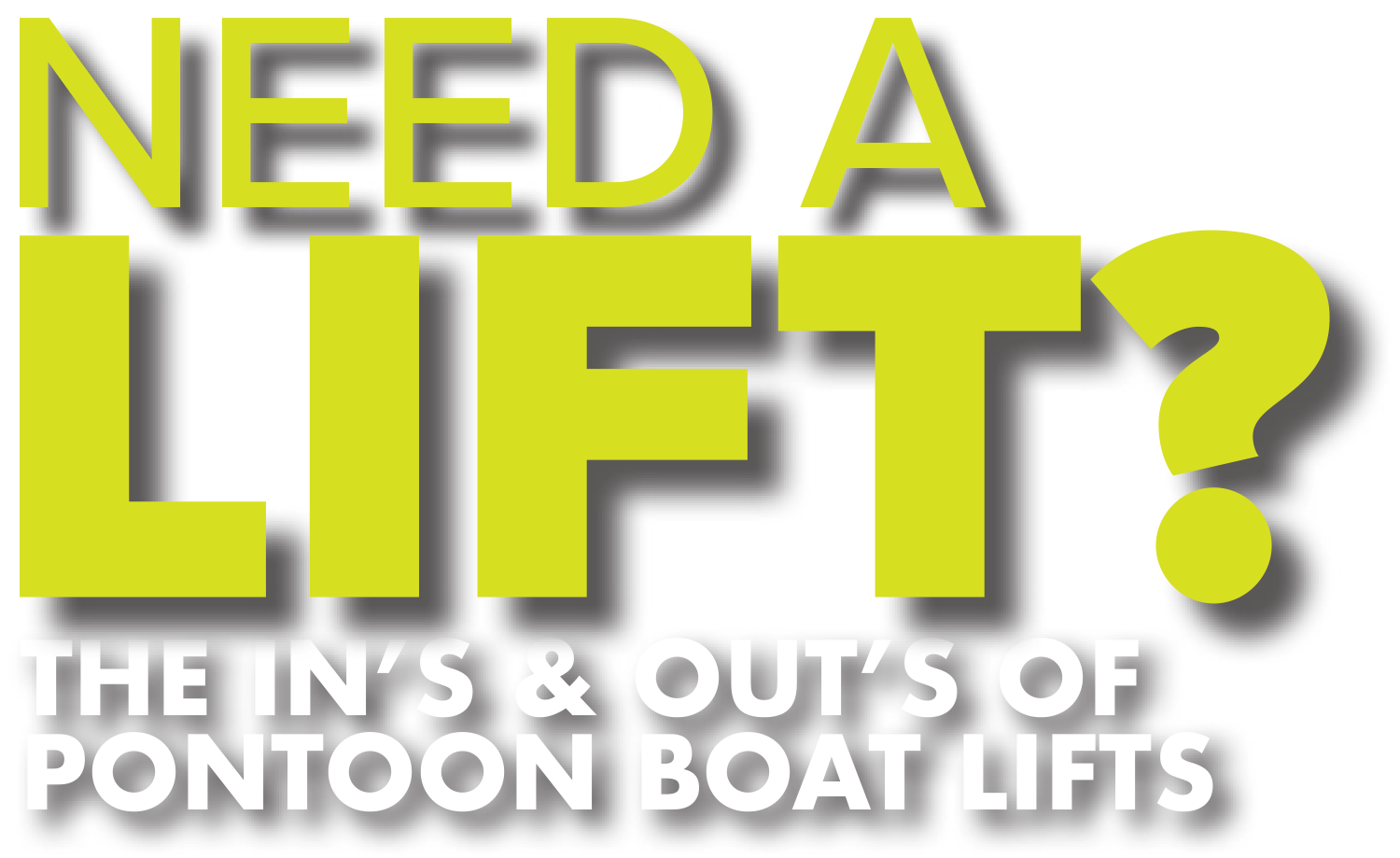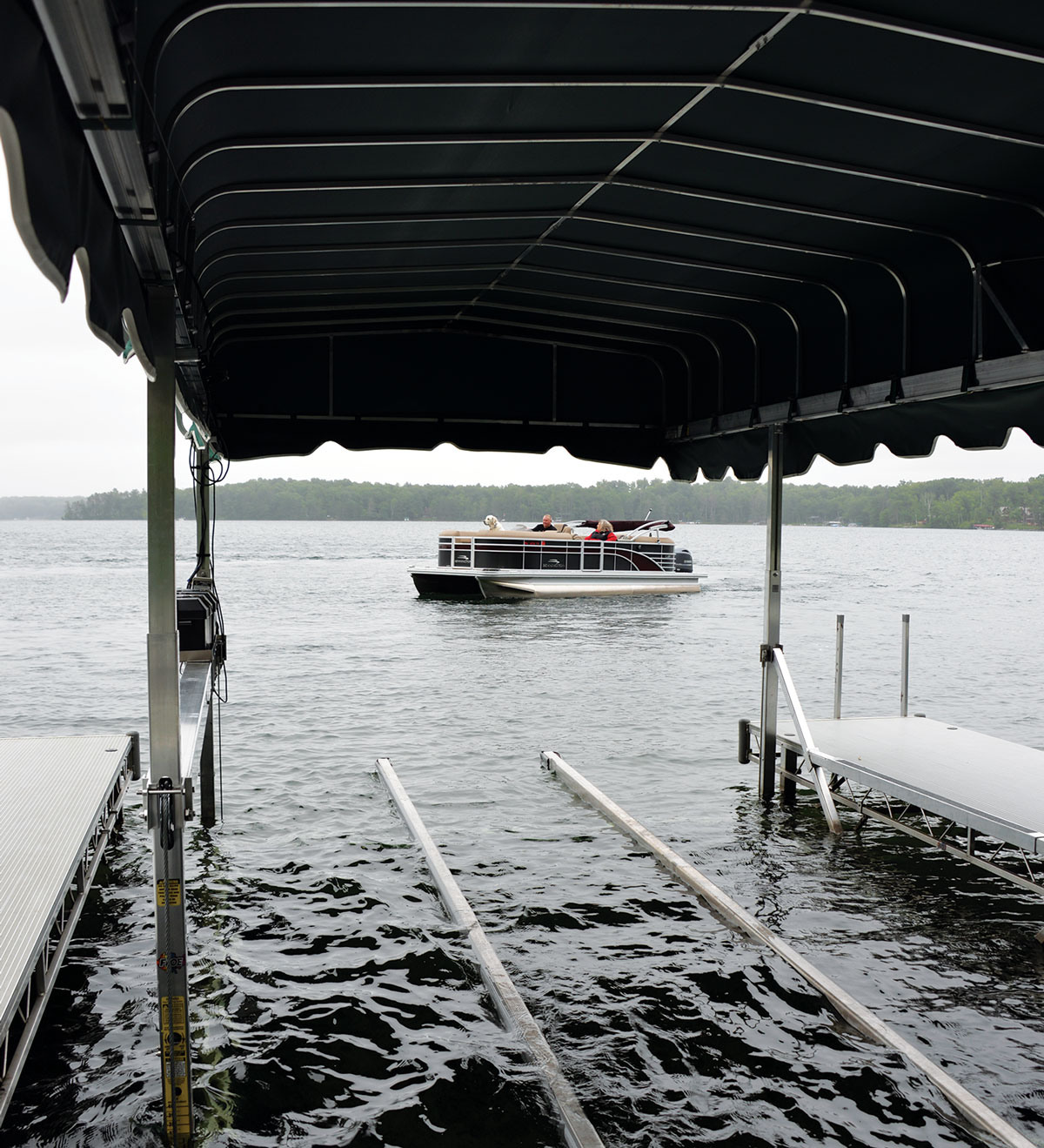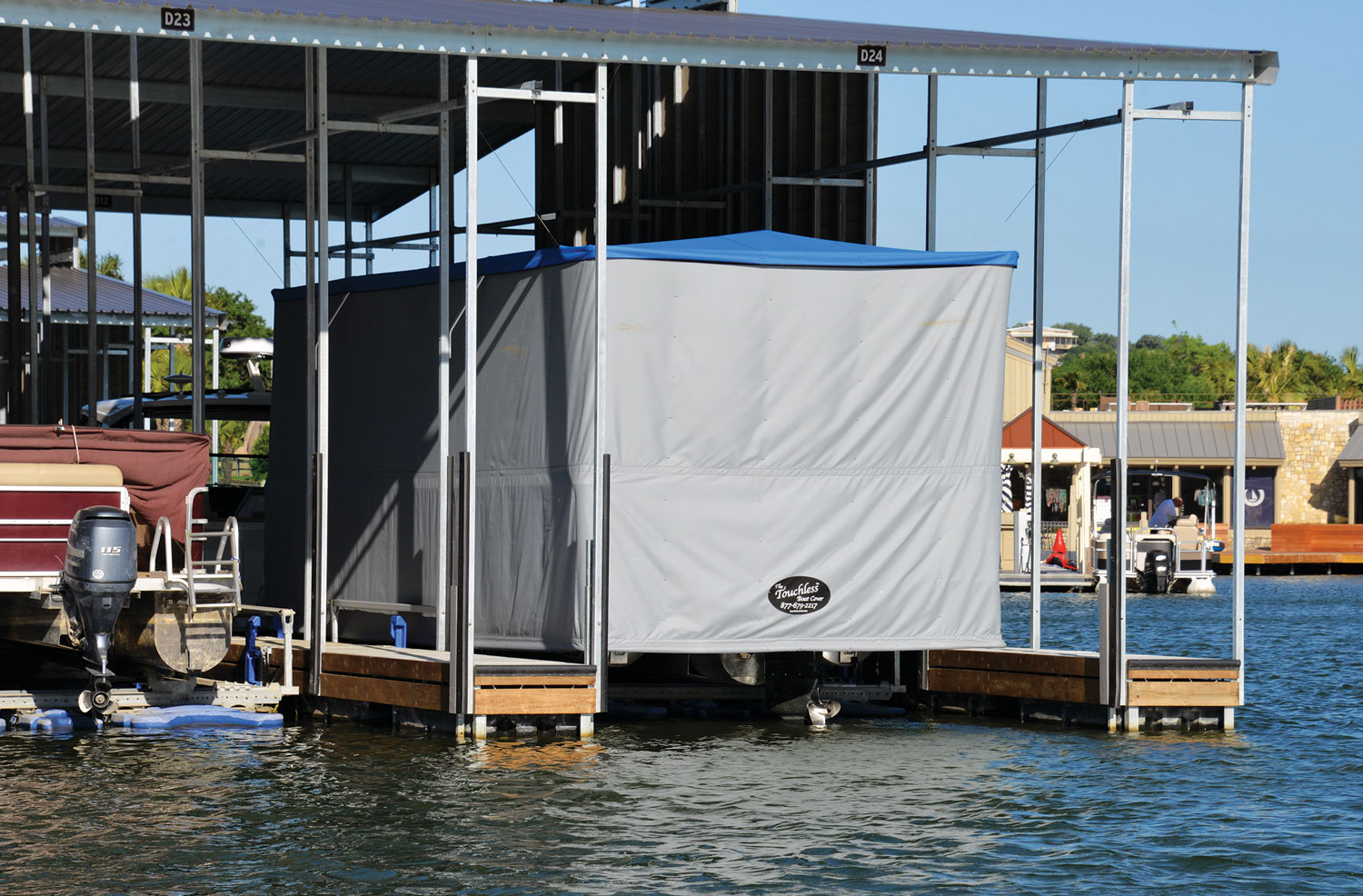

One of the important steps of buying a new pontoon boat is figuring out where to put it when you’re not using it. That’s where boat lifts can come in handy.
Back in the day, a standard lift would probably do the trick, but with modern pontoons getting longer, wider and heavier, you’ll most likely need a lift designed specifically for your pontoon. Let’s dive right in.
While there’s nothing wrong with using some sturdy rope to simply tie your new boat to any available part of the dock or pier, there are some definite benefits to opting for a boat lift instead.
To start, pontoon boat lifts make boating easier by allowing you to launch your pontoon from the dock into water and then elevate it out of the water until you return. Without one, you’d either be leaving you boat to sit in the water at the dock or having to trailer it every time you want to go boating.
Since aluminum gelcoats are porous, algae and unwanted critters such as zebra mussels stick to them if you leave your boat in the water. Plus, gelcoats could retain water, making your pontoon move slower from added weight and drag.
Trailering your boat is an added inconvenience compared to having your boat ready to go when you are. In the end, boat lifts are cleaner and more convenient than these two options.
Before running out to buy a boat lift, there are a few things you need to consider: location, depth, weight, width and length. The last thing you want to do is purchase a pricey lift only to find it incompatible with your pontoon boat.
First off, there’s the planned location of your new lift. If you’re going to have it on a moving body of water such as a main channel, you’re going to need a hardier boat lift that can withstand the current. It’ll take more structural strength to lift a pontoon in rough water than it will in a no-wake zone.
Then there’s water depth. Shallow water can present a problem if you can’t submerge the lift in enough water to load and unload your pontoon. Water levels are subject to change day-to-day as well, so keep this in mind when looking at lift options.
The weight of your boat is another obvious factor to consider. Every boat lift has different weight capacities. Make sure your chosen lift can handle the weight of your pontoon when it’s both dry and fully loaded.
The lift also has to be wide enough to accommodate your boat. Don’t forget the slip you’re using needs to be wide enough to fit your boat lift as well. If you get the wrong size, you run the risk of damaging both your boat and the dock.
Lastly, you’ll need to factor in your boat’s length so you can align its center of gravity with the boat lift. This will allow you to maximize the lift’s capacity while minimizing the strain on the dock.

(1) Get To Know Your Lift
All boat lifts are different, so take the time to get to know yours. Once you’ve got your lift installed and ready to go, don’t be afraid to ask the installers or manufacturers what some of the best practices are for loading and unloading.
They should be able to show you where the boat needs to go on the cradle for even weight distribution. Getting to know your lift’s configuration will help prevent any damage.
(2) Practice Positioning
Once you know where to position you boat on your new lift, don’t be afraid to practice a little. It might even be a good idea to practice pulling your boat up alongside the dock a few times before trying to position it in your lift. Also be sure to turn the wheel in the direction you want to go before moving the throttle forward.
(3) Beware Of Wind
Wind can be another tricky obstacle to navigate. It can make the water choppy and push your boat around quite a bit, so you’ll have to use extra caution in these situations.
If you can’t get your boat to stay straight in the wind, don’t be afraid to tie your pontoon to the dock and give it another go once the wind dies down a bit. Sometimes waiting a little while will allow it to blow over so you can try again in better conditions.
(4) Watch Your Speed
There’s no need to race onto your boat lift. Remember that boats don’t have brakes (what?!) and have a lot of momentum when they’re in motion. Experienced captains use this momentum to their advantage. Slow and steady wins the race in this case.
Remember, it’s not rocket science and, as with everything, it gets easier with practice. Now that you know some of the basics about pontoon boat lifts, you should be ready to get out there and find the perfect lift for both you and your boat. Good luck out there!